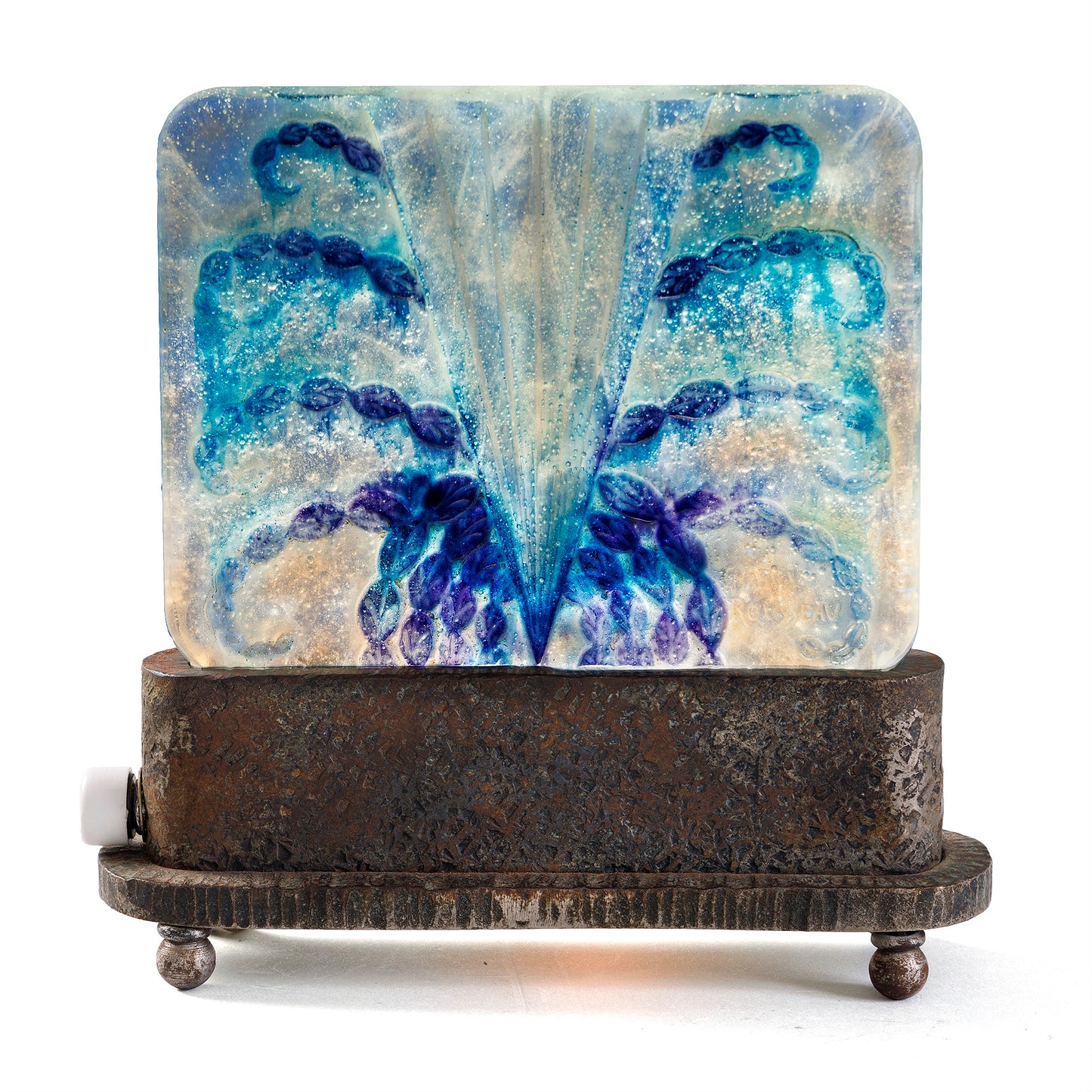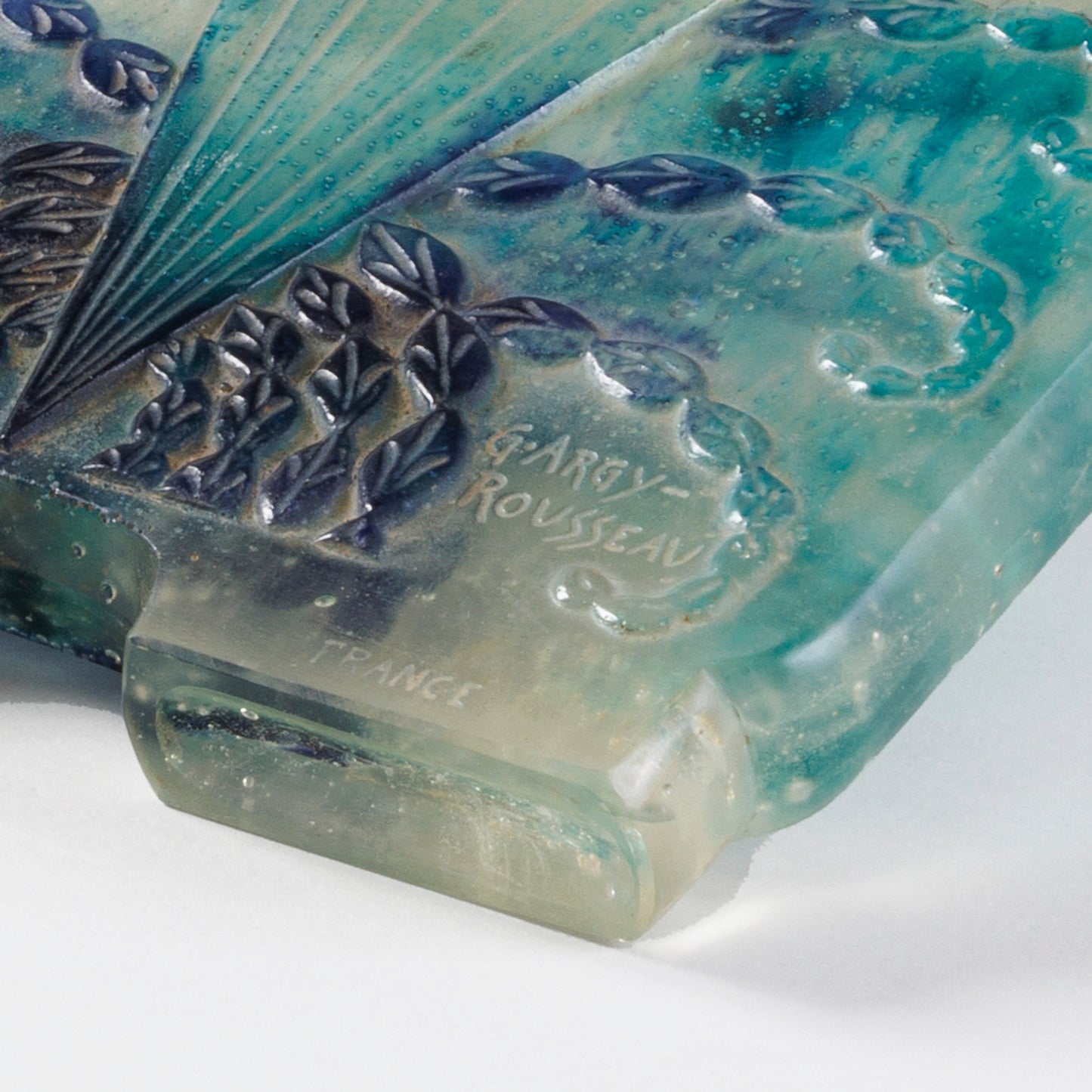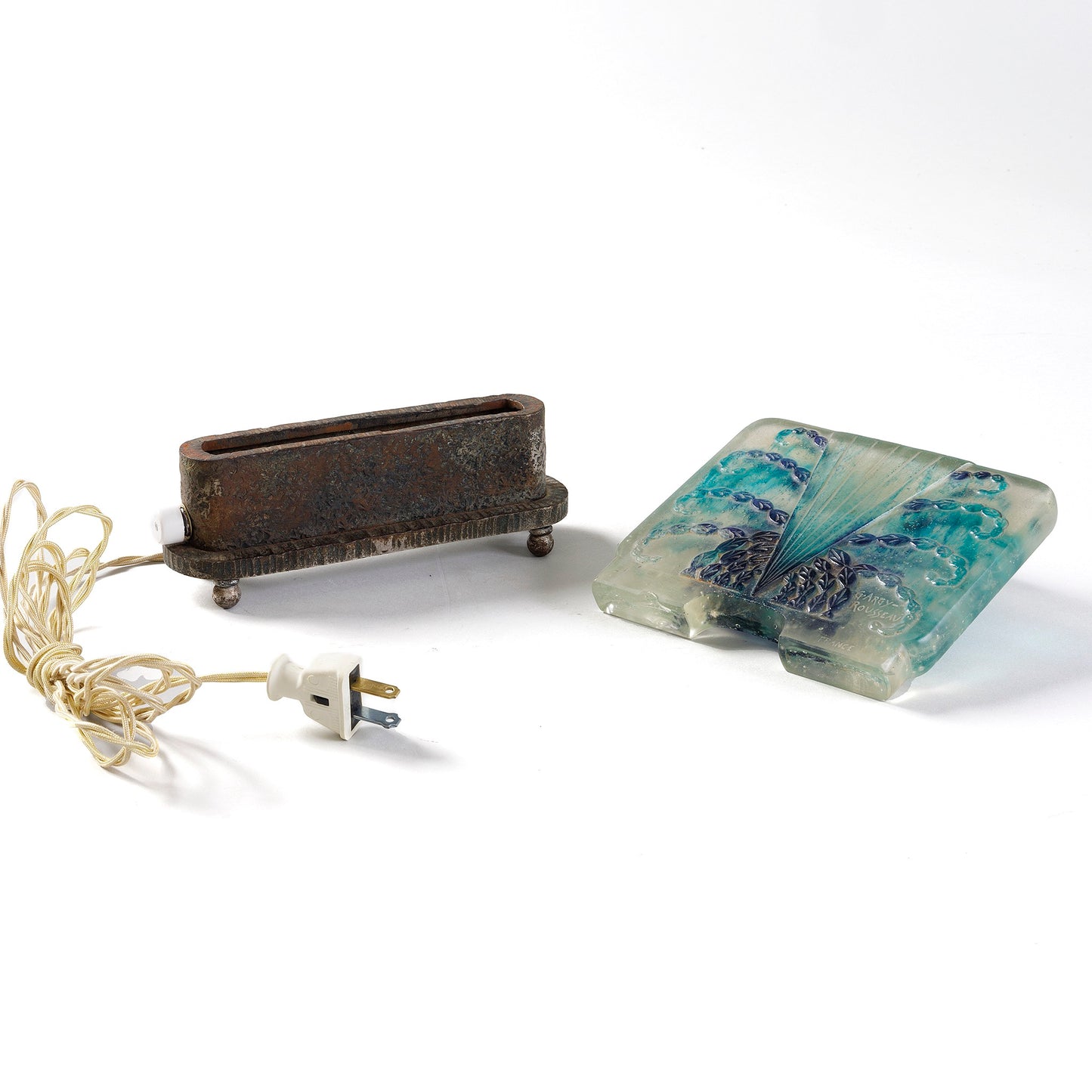Gabriel Argy-Rousseau Pâte de Verre "Algues" Night Light
Item #: YEL-21278
Artist: Gabriel Argy-Rousseau
Country: France
Circa: 1930
Dimensions: 7.375" height, 7" width
Materials: Pâte de verre, translucent glass, Wrought Iron
Signed: signed in the mold "G. Argy-Rousseau" and "FRANCE"
Literature: Bloch-Dermant Janine Gabriel Argy-Rousseau and Yves Delaborde. 1991. G. Argy-Rousseau : Glassware As Art : With a Catalogue Raisonné of the Pâtes De Verre. London: Thames and Hudson. p.141
Item #: YEL-21278
Artist: Gabriel Argy-Rousseau
Country: France
Circa: 1930
Dimensions: 7.375" height, 7" width
Materials: Pâte de verre, translucent glass, Wrought Iron
Signed: signed in the mold "G. Argy-Rousseau" and "FRANCE"
Literature: Bloch-Dermant Janine Gabriel Argy-Rousseau and Yves Delaborde. 1991. G. Argy-Rousseau : Glassware As Art : With a Catalogue Raisonné of the Pâtes De Verre. London: Thames and Hudson. p.141



















